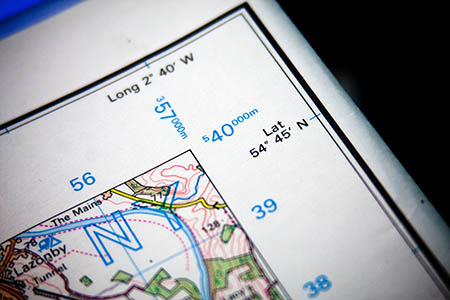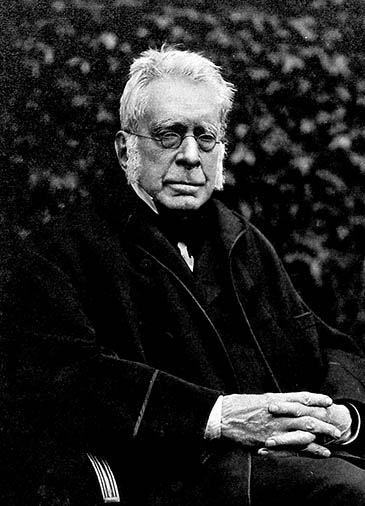
Most outdoor enthusiasts use the blue national grid co-ordinates rather than black latitude and longitude
Britain’s national mapping agency is considering abandoning a system of co-ordinates on its maps first devised more than 180 years ago.
Ordnance Survey is seeking views on changing its latitude and longitude markers to a system used by most GPS devices.
The organisation stressed it is not changing its national grid references, which are used by most outdoor enthusiasts, but may change the lat and long datum to the WGS84 model, in recognition that most users now refer to that, rather than its present Airy 1830, which was devised by Britain’s Astronomer Royal in the 19th century.
An OS spokesperson said: “This would mean moving towards the overlay showing latitude and longitude used on GPS devices, to help bring digital navigation devices and paper maps closer together and work more in harmony.
“We believe this would have little impact on the majority of users of our paper maps. However, we would like your opinions on this change to ensure we fully consider all options and impacts before we make a final decision.”
Outdoor fans can complete a short online survey to give their views.
The national grid, which is familiar to most walkers, cyclists and other outdoor fans, uses a rectilinear system of squares across Great Britain, with two index letters followed by co-ordinate numbers.
The spokesperson said: “Most people use OS paper maps for location. Either they want to know where they are, or where they want to get to, or even where they’ve just been.
“Once you have an OS paper map in front of you, there are a couple of ways of identifying the location you’re after: you can use national grid, or latitude and longitude.
“Most countries will define a ‘grid’ that can be overlaid onto a map of their country to help determine location. In Great Britain, the national grid is the map reference system used on all Ordnance Survey maps to identify the position of any feature.
“Latitude is generally understood as your position in relation to the equator, which is zero degrees, and the distances you might be north or south of that line.
“Longitude is generally understood as your position in relation to the prime meridian, which for Great Britain – and much of the rest of the world – is sited at the Royal Observatory, Greenwich. This is also zero degrees.
“Each of these methods will help you to pinpoint and find a location on a map.
“To make life a little more complicated, the Earth is not a perfect sphere – it’s a bit squashed at the poles, so it bulges around the equator, like a satsuma. This shape is called ellipsoid.
“This can impact on how location is calculated. Various interpretations have developed as geographers adapt latitude and longitude calculations to best fit the ellipsoid in their part of the world; these are datums.
“Ordnance Survey’s work in Great Britain uses the Airy 1830 ellipsoid to underpin the representation of latitude and longitude on OS paper maps, as this best fits Britain.”
It was developed by Sir George Biddell Airy, the Northumbrian-born mathematician and astronomer, in 1830, hence the name. He went on to be appointed Astronomer Royal five years later, and his ellipsoid still underpins OS’s mapping.
The agency’s spokesperson said: “In recent years, more and more map users are starting to use GPS devices, which operate on a datum with a wider geographical reach than just Great Britain. The datum that underpins GPS is called WGS84, and through sheer volume of usage is starting to become the default datum.
“To support this increasing usage of GPS devices, OS are considering options that could help bring digital navigation devices and paper maps closer together and work more in harmony.
“Such an option could be the changing of the overlay on paper maps from Airy 1830 to WGS84.
“It’s important for us to stress that this is not a change in the base map datum or the national grid, which remains the Transverse Mercator Projection on the Airy 1830 ellipsoid, but it would result in a change in the datum of the latitude-longitude overlay only, adjusting where the latitude-longitude markers fall on the OS paper maps.
“For OS Landranger Maps, this movement may be as little as 2mm.
“We realise that this is an important change to how our paper maps are presented, so we want to find out what the impact of implementing this change might be to you, the users of OS paper maps.”
The survey has seven questions, and the closing date for completing it is Friday 3 October.

dawn nelson
18 September 2014The survey link won't open
Bob
18 September 2014We've tested the link in two different browsers and it worked fine for us.
Bob
Editor
Ken
18 September 2014Link worked fine for me.
Steve
18 September 2014In more than 40 years of mountaineering, I have never used the latitude and longitude markers on OS maps so i won't notice if they move slightly. I would love to know if anyone has needed to use them.
Michael
22 September 2014OS maps are the best in the world and OS's concern with this change is commendable. However the British National Grid (BNG) system is such a good one that discussions about Longitude and Latitude are really of peripheral interest to mountain walkers. If you want to mark where you are or label where you want to get to you use the BNG. People talk about Longitude and Latitude as if it were AN alternative... it actually THREE alternatives, depending on what combination of hours, degrees, seconds and decimal minutes etc you want to use. If you want to use a grid reference in this country to tell Mountain Rescue where you are you use the BNG. If you are abroad you forget grid references completely and use geographical features... the alternative is to first agree what version of Long-Lat you are using. Personally I would bin Long/Lat and use the UTM/UPS system which is a worldwide grid similar to our BNG in principal based on WGS84. But never get rid of the British National Grid!
Harry
23 September 2014WGS84 is now the de facto standard and it makes sense to change. At the scale of 1:50,000 (Landranger) and 1:25,000 (Explorer) most map-users would not even notice the shift.
Nick
24 September 2014We often use OS maps when flying into small airstrips when we need more detail than can be shown on the 1:250,000 aeronautical chart, so I would be very happy to see the OS map datum harmonised with the WGS 84 already used on the CAA charts.